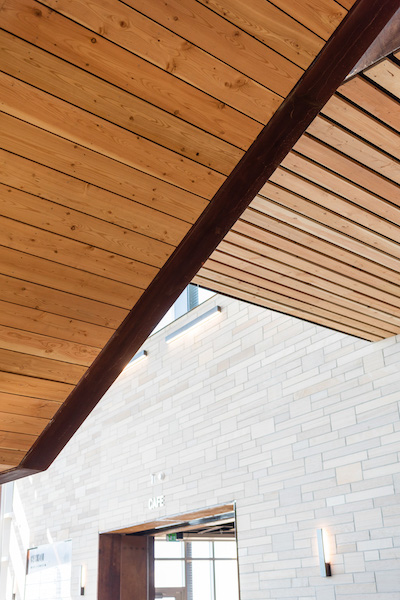Pikes Peak Summit Complex


From early involvement with product selection, to helping meet the challenge of the world’s most rigorous environmental certification programs, MAPEI’s experts meet the challenge of Pikes Peak Summit Visitor Center in Cascade, Colo.
Known for its system solution-approach to sustainable products, MAPEI was honored to play a role in the construction of the new 38,000 sq. ft., Summit Complex high atop Pikes Peak at 14,115 feet of elevation – the highest total precast concrete structure in the world. MAPEI’s technical experts as well as MAPEI’s products have been foundational in the work atop “America’s Mountain.”
Some of the challenges included “lack of oxygen, COVID-19, falling off the mountain, and extreme cold weather,” said Jim Whitfield, MAPEI’s Director of Technical Services, who is no stranger to the mountain himself, having lived in nearby Colorado Springs. “These were all conditions that had to be taken into consideration and faced on this project. In fact, the general contractor bid this project based on a 65% efficiency for the construction due to conditions, altitude and weather,” he continued, describing the job. It is a scenario straight out of an “adventure” movie.


As if the jobsite and the 38,000 sq. ft. tile install itself wasn’t enough of a challenge, the City of Colorado Springs wanted to ensure that the building program was environmentally sound. They decided to pursue multiple green building certifications, including the Living Building Challenge (LBC) – the world’s most rigorous green building program.
Whitfield explained, “MAPEI Sustainability, led by our Sustainability Manager Brittany Storm, has been involved in this project since early 2019, consulting with the tile contractor, architectural firm and the general contractor on the Summit Complex, to make recommendations and provide proof of sustainable products that meet the Living Building Challenge and LEED Platinum requirements.”


Storm explained, “We advocate to be involved with the design team early in a project, especially when it comes to sustainability – as the design and construction teams are not expected to know every manufacturer’s product line inside and out. And then add having to know each product’s sustainable attributes and certifications on top of that. We prided ourselves on helping the Pikes Peak team select products that made the most sense for the building project and for meeting LEED and Living Building Challenge requirements.”


On top of the logistics of just getting materials up the mountain, the Pikes Peak design team considered factors including designing the building in such a way as to be Net-Zero water-ready. (This means the building will be able to – among other features – gather and reuse rainwater and snow.) The list of MAPEI products that Storm and MAPEI experts ultimately compiled is extensive and applies to both interior and exterior applications.
But what works for one green building system may not work for another. Storm explained the challenge: “We had to work with contractors, design team, construction team, and MAPEI (architectural reps and tech services) to strategically select products that not only met the performance, aesthetic and other traditional considerations but also the Living Building Challenge’s and LEED’s sustainability requirements,” Storm added. “While there are synergies between the two green building standards, there are also green product requirements that would work for one standard but not the other. We had to juggle both standards and find products that took both traditional and sustainable (both LBC and LEED) considerations into account.” Fortunately, MAPEI has a wide variety of products that qualify toward credits. Storm continued, “We’ve been innovating sustainability for a long time. Ultimately, more than 15 MAPEI products across three product lines were used on the Visitor Center.”


The Pikes Peak Visitor Center was designed to meet the threshold for a minimum certification of LEED Silver. However, with all the sustainable design and construction strategies that the center has incorporated, it may achieve LEED Platinum (as of this article, the final certification had yet to be awarded). And, as the Visitor Center’s Website proudly proclaims, “Every aspect of the new Visitor Center was carefully and thoroughly reviewed with sustainability at the forefront of the entire project. It is the most sustainable high-altitude structure in the country, if not the world.”
This is thanks in no small measure to the hard work and technical expertise of MAPEI. “We like to say that ‘sustainability is part of everything that we do’,” said Whitfield. On America’s Mountain, it truly was a consideration of every aspect.







